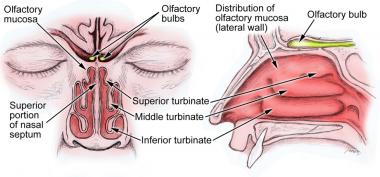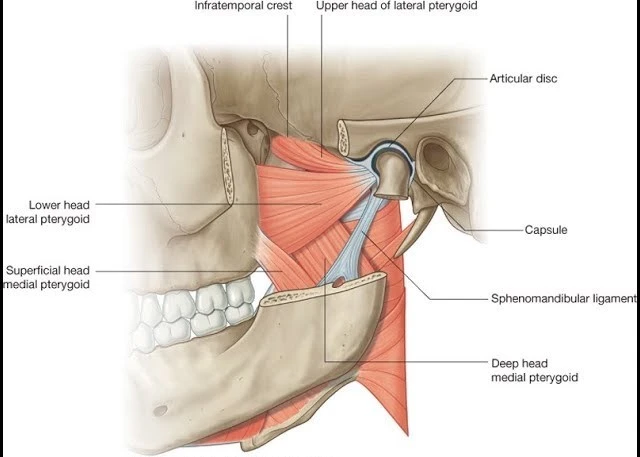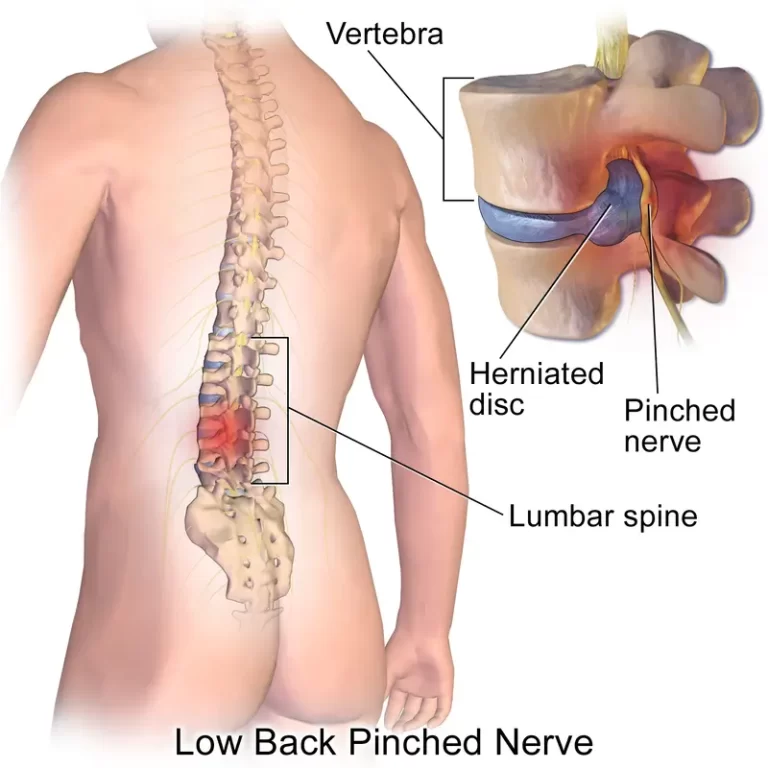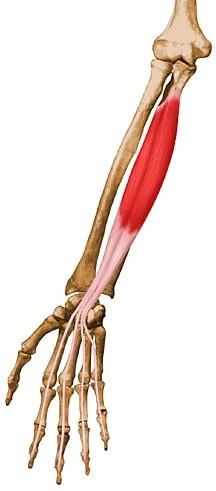Vitamins
What is a Vitamins?
Organic compounds known as vitamins, or a group of closely similar molecules known as vitamers, are necessary for an organism’s correct metabolism when present in modest amounts. Essential nutrients must be received through diet since the body is unable to synthesize them in adequate amounts for survival.
For instance, some species are able to synthesize vitamin C, but not others; in the former case, vitamin C is not regarded as a vitamin, but in the latter, it is. Most vitamins are actually collections of related molecules called vitamins rather than single molecules. For instance, vitamin E is composed of eight different vitamins: four tocopherols and four tocotrienols.
The three other categories of important nutrients—minerals, essential fatty acids, and essential amino acids—are not included in the word “vitamin.”
Thirteen vitamins are listed by major health organizations:
- Vitamin A
- Vitamin B1 (thiamine)
- Vitamin B2 (riboflavin)
- Vitamin B3 (niacin)
- Vitamin B5 (pantothenic acid)
- Vitamin B6 (pyridoxine)
- Vitamin B7 (biotin)
- Vitamin B9 (folic acid and folates)
- Vitamin B12 (cobalamins)
- Vitamin C (ascorbic acid and ascorbates)
- Vitamin D (calciferols)
- Vitamin E (tocopherols and tocotrienols)
- Vitamin K (phylloquinones, menaquinones, and menadiones)
Choline is the 14th, according to certain sources.
Vitamins perform a variety of biochemical tasks. The proliferation and differentiation of cells and tissues is regulated by vitamin A. By controlling the metabolism of minerals in bones and other organs, vitamin D performs a role similar to that of a hormone.
The vitamins in the B complex serve as precursors or cofactors for enzymes. Antioxidants include vitamins C and E. Clinically severe sickness might potentially result from both excess and insufficient vitamin intake, while excess water-soluble vitamin intake is less likely to do so.
The discovery of each vitamin took place between 1913 and 1948. Vitamin deficiency disorders have historically resulted from inadequate vitamin intake through diet. Then, starting in 1935, yeast-extract vitamin B complex and semi-synthetic vitamin C tablets were made accessible in the market.
In order to prevent vitamin deficiencies in the general population, multivitamins, and other vitamin supplements were mass-produced and marketed in the 1950s. Food fortification, the process of adding certain vitamins to staple foods like milk or bread, is required by law in order to prevent vitamin deficiencies. Pregnancy-related folic acid supplementation guidelines decreased the risk of neural tube abnormalities in unborn children.
List of vitamins
| Vitamin | Vitamers | SUBTILITY | Dietary recommendations made by the US | Deficiency diseases | Overdose Related Conditions | Food sources |
| A | retinoic acid, retinoids, and all-trans-retinol provitamin A carotenoids (beta, gamma, and alpha-carotene) the beta-cryptoxanthin of xanthophyll | FAT | 900 µg / 700 µg | keratomalacia, hyperkeratosis, and night blindness | excess vitamin A | from animal sources as dairy products, fish in general, and liver as all-trans-retinol; from plants, such as orange, ripe yellow fruits, green vegetables, carrots, pumpkin, squash, and spinach, as provitamin A / all-trans-beta-carotene. |
| B1 | thiamine monophosphate (thiamine) pyrophosphate thiamine | WATER | 1.1 mg/1.2 mg | Wernicke-Korsakoff syndrome and beriberi | sluggishness and relaxed muscles | eggs, brown rice, meat, vegetables, potatoes, liver, and wholemeal grains |
| B2 | FMN, or flavin mononucleotide, is riboflavin. adenine dinucleotide flavin (FAD) | WATER | 1.1 mg/1.3 mg | angular stomatitis, glossitis, and ariboflavinosis | dairy goods, asparagus, green beans, and bananas | |
| B3 | Nicotinic acid Nicotinamide riboside and niacinamide | WATER | 16 milligrams/14 milligrams | pellagra | additional issues including liver damage (doses > 2g/day) | fish, poultry, eggs, a variety of veggies, mushrooms, and tree nuts |
| B5 | Pantothenic acid Pantethine and panthenol | WATER | 5 milligrams/5 milligrams | paresthesia | diarrhea; potentially with heartburn and nausea. | avocados, broccoli, and meat |
| B6 | triiodopamine, triiodopamine, and triidoxal | WATER | 1.3-2.5 mg and 1.3-1.7 mg | peripheral neuropathy and anemia | proprioception impairment and nerve damage (doses greater than 100 mg/day) | steak, veggies, almonds, and bananas |
| B7 | biotin | WATER | AI: 30 µg/30 µg | Enteritis, dermatitis | leafy green vegetables, liver, peanuts, and raw egg yolk | |
| B9 | folic acid and folates | WATER | 400 µg out of 400 µg | Pregnancy-related megaloblastic anemia and deficiency is linked to birth abnormalities like neural tube malformations | may conceal vitamin B12 deficient symptoms; additional effects. | leafy greens, noodles, bread, porridge, and liver |
| B12 | methylcobalamin, adenosylcobalamin, hydroxocobalamin, and cyanocobalamin | WATER | 2.4 µg/2.4 µg | a lack of vitamin B12 anemia | none established | fish, meat, poultry, eggs, and milk |
| C | vitamin C | WATER | 90 milligrams and 75 milligrams | scurvy | gas, diarrhea, and stomach ache | a large number of fruits and veggies, liver |
| D1 | combination of ergocalciferol and lumisterol chemical molecules, 1:1 | FAT | 15 µg/15 µg | Together with osteomalacia | excess vitamin D | |
| D2 | Ergocalciferol | FAT | 15 µg/15 µg | Together with osteomalacia | excess vitamin D | sun-exposed yeast with mushrooms |
| D3 | Cholecalciferol | FAT | 15 µg/15 µg | Together with osteomalacia | excess vitamin D | fish liver oils, fatty fish (mackerel, salmon, and sardines), and eggs from chickens given vitamin D |
| D4 | Ergocalciferol 22-dihydro | FAT | 15 µg/15 µg | Together with osteomalacia | excess vitamin D | |
| D5 | calcium carbonate | FAT | 15 µg/15 µg | Together with osteomalacia | excess vitamin D | |
| E | Tocotrienols and Tocopherols | FAT | 15 milligrams/15 milligrams | insufficiency is quite uncommon; newborns with mild hemolytic anemia | a potential rise in congestive heart failure incidence. | a wide variety of fruits, vegetables, seeds, nuts, and oils |
| K1 | Phylloquinone | FAT | 15 milligrams/15 milligrams | bleeding diathesis | reduced warfarin’s anticoagulant impact. | green leafy vegetables, like spinach |
| K2 | Menaquinone | FAT | 15 milligrams/15 milligrams | bleeding diathesis | reduced warfarin’s anticoagulant impact | Fish, beef, pig, nattō, chicken, and eggs |
History
Long before vitamins were discovered, the importance of consuming particular foods to preserve health was understood. The ancient Egyptians understood that consuming liver might treat night blindness, which is currently understood to be brought on by a shortage in vitamin A.
As ocean travel advanced throughout the Age of Discovery, crew members frequently suffered from vitamin deficiencies and went for extended periods of time without access to fresh produce.
Citrus foods are thought to help prevent scurvy, a particularly fatal condition that causes improper formation of collagen, leading to poor wound healing, bleeding gums, excruciating pain, and even death.
This was discovered in 1747 by the Scottish surgeon James Lind. The British Royal Navy accepted Lind’s 1753 Treatise on the Scurvy, which suggested consuming lemons and limes as a preventative measure against scurvy.
British sailors came to be known as limey as a result. On the other hand, Lind’s discovery was not widely acknowledged by those who had been involved in the Royal Navy’s Arctic expeditions in the 19th century.
At that time, the general consensus was that scurvy could be avoided by maintaining good hygiene, getting regular exercise, and keeping the crew morale high while at sea rather than by eating a diet high in fresh food.
Scurvy and other deficiency disorders consequently persisted to be a problem for Arctic expeditions. The accepted medical belief at the time of Robert Falcon Scott’s two Antarctic journeys in the early 1900s was that canned food that had been “tainted” was the source of scurvy, Food that had been “tainted” by canning.
At the University of Tartu in 1881, Russian physician Nikolai I. Lunin [ru] conducted research on the consequences of scurvy. He gave mice a fake concoction that contained all of the distinct components of milk that were understood at the time, including proteins, lipids, carbs, and salts. The mice that were given the various components alone perished, whereas the mice that were given milk itself flourished.
He determined that “a natural food such as milk must therefore contain, besides these known principal ingredients, small quantities of unknown substances essential to life.” His advisor, Gustav von Bunge, disapproved of his conclusions. Although Cornelius Pekelharing’s identical finding was published in a Dutch medical journal in 1905, it was not generally publicized.
Benigna, a condition caused by a deficiency of vitamin B1, was widespread in East Asia, where middle-class people typically ate polished white rice as a staple diet. The Imperial Japanese Navy’s British-trained physician Takaki Kanehiro noted in 1884 that beriberi was common among lower-ranking crew members who frequently only ate rice, but not among officers who followed a Western diet.
He conducted an experiment with two battleship crews, one of which was fed just white rice and the other a diet consisting of beef, fish, barley, rice, and beans, with the assistance of the Japanese navy. In contrast to the latter group, which had just fourteen incidences of beriberi and no deaths, the group that consumed only white rice reported 161 crew members having beriberi and twenty-five deaths.
| YEAR OF DISCOVERY | VITAMIN | FOOD SOURCE |
| 1913 | Vitamin A (Retinol) | Oil from cod liver |
| 1910 | Vitamin B1 (Thiamine) | Bran rice |
| 1920 | Vitamin C (Ascorbic acid) | citrus and the majority of fresh foods |
| 1920 | Vitamin D (Calciferol) | Oil from cod liver |
| 1920 | Vitamin B2 (Riboflavin) | Eggs, dairy products, and meat |
| 1922 | Vitamin E (Tocopherol) | Vegetable oils without refinement, wheat germ oil |
| 1929 | Vitamin K1 (Phylloquinone) | Leafy greens |
| 1931 | Vitamin B5 (Pantothenic acid) | Whole grains, meat, and a variety of meals |
| 1934 | Vitamin B6 (Pyridoxine) | Dairy and meat products |
| 1936 | Vitamin B7 (Biotin) | Dairy, meat, and eggs |
| 1936 | Vitamin B3 (Niacin) | Grain and meat |
| 1941 | Vitamin B9 (Folic acid) | Leafy greens |
| 1948 | Vitamin B12 (Cobalamins) | Meat, poultry, eggs, and liver |
This convinced Takaki and the Japanese Navy that beriberi was caused by nutrition, but they thought, incorrectly, that eating enough protein prevented the illness.
Christiaan Eijkman conducted additional research on the possibility that certain diseases could be caused by dietary deficiencies. In 1897, he found that giving chickens unpolished rice instead of polished rice helped to avoid a type of polyneuritis that was similar to beriberi.
The following year, Frederick Hopkins proposed that certain diets included “accessory factors” in addition to the proteins, carbs, lipids, and other elements required by the body for its operations.
Vitamin” to “Vitamine”
Umetaro Suzuki, a Japanese chemist, successfully extracted a water-soluble complex of micronutrients from rice bran in 1910 and called it aberic acid, which was later dubbed orizanin. This marked the isolation of the first vitamin complex.
This discovery was published by him in a Japanese scientific magazine. His discovery did not receive media attention because the German translation of the paper omitted the claim made in the Japanese original that it was a recently found nutrient. Polish-born scientist Casimir Funk was employed in London in 1912.
The identical micronutrient complex was isolated, and it was suggested that the complex be called a “vitamin”. Subsequently, it was identified as niacin, or vitamin B3, although he initially termed it “anti-beri-beri-factor” (now known as thiamine or vitamin).
Funk postulated that vitamins might also be able to treat other conditions like scurvy, pellagra, celiac disease, and rickets. The word “vitamin” (derived from “vital amine”) was purportedly suggested by Max Nierenstein, a friend and Bristol University reader of biochemistry.
The moniker quickly became the term “accessory factors” was widely used and became synonymous with Hopkins’ theory.
However, it was later demonstrated that not all vitamins are amines. Researchers started to assume that not all “vitamines” (especially vitamin A) have an amine component, therefore in 1920 Jack Cecil Drummond recommended dropping the final “e” to deemphasize the “amine” relation, hence “vitamin.”
Nobel Prizes for vitamin research
Adolf Windaus was the first person to be given a Nobel Prize in Chemistry for 1928 “for his studies on the constitution of the sterols and their connection with vitamins,” albeit the award did not expressly mention vitamin D.
Christiaan Eijkman and Frederick Gowland Hopkins were given the 1929 Nobel Prize in Physiology or Medicine in recognition of their contributions to the discovery of vitamins.
A quarter of a century prior, Eijkman had noted that birds fed refined white rice displayed neurological signs akin to those seen in soldiers and sailors in the armed forces who were fed a diet high in rice, and that the symptoms disappeared when the hens were given whole-grain rice. What he referred to as “the anti-beriberi factor” turned out to be vitamin B1 or thiamine.
Paul Karrer discovered additional carotenoids and clarified the proper structure of beta-carotene, the primary precursor of vitamin A, in 1930. In addition to confirming Albert Szent-Györgyi’s discovery of ascorbic acid, Karrer and Norman Haworth made important contributions to the chemistry of flavins, which helped identify lactoflavin.
Their studies on carotenoids, flavonoids, and vitamins A and B2 earned them both the 1937 Chemistry Nobel Prize.
Charles Glen King received a sample from Albert Szent-Györgyi and Joseph Svirbely in 1931, who suspected that “hexuronic acid” was actually vitamin C.
King used his well-established guinea pig scorbutic assay to demonstrate the substance’s ability to prevent scurvy. Szent-Györgyi’s discovery earned him the 1937 Nobel Prize in Physiology or Medicine. For discovering vitamin K and its chemical makeup, Edward Adelbert Doisy and Henrik Dam were granted the 1943 Nobel Prize in Physiology or Medicine.
Richard Kuhn won the 1938 Nobel Prize in Chemistry as a result of his research on vitamins B2 and B6 and carotenoids.
For their direct and indirect research on vitamin B12, George Whipple, George Minot William P. Murphy (1934), Alexander R. Todd (1957), and Dorothy Hodgkin (1964) have all received Nobel Prizes.
Haldan Keffer Hartline, George Wald, and Ragnar Granit were granted the 1967 Nobel Prize in Physiology and Medicine “…for their discoveries concerning the primary physiological and chemical visual processes in the eye.” The discovery of vitamin A’s involvement in the process was Wald’s contribution.
History of promotional marketing
Once they were identified, vitamins were aggressively pushed in McCall’s, Good Housekeeping, and other publications. Bananas as a “natural vitality food” and cod liver oil, a source of vitamin D, as “bottled sunshine” were eagerly marketed.
Instead of emphasizing flavor or beauty, they promoted goods like yeast cakes, a source of B vitamins, based on their nutritional value as established by science.
When nicotinic acid enrichment of flour was introduced in 1942, the popular press ran a headline that read, “Tobacco in Your Bread.” In response, the Food and Nutrition Board’s new names, niacin and niacin amide, were approved by the American Medical Association’s Council on Foods and Nutrition for use primarily by non-scientists.
It was deemed suitable to adopt a name that would distinguish nicotinic acid from nicotine and prevent the misconception that vitamins, niacin-rich foods, or cigarettes include vitamins.
Nicotinic acid plus vitamin resulted in the name niacin. Additionally, researchers concentrated on the necessity of ensuring sufficient nutrition, particularly to make up for nutrients lost during the production of processed foods.
The term “vitamania” was coined in 1942 by Robert W. Yoder to characterize the appeal of depending more on dietary supplements than on eating a diversified diet rich in vitamins.
The ongoing obsession with maintaining a healthy lifestyle resulted in an obsessive use of multivitamins and vitamins, the efficacy of which is debatable.
For instance, Wonder Bread sponsored the Howdy Doody television program in the 1950s, and host Buffalo Bob Smith told the audience that Wonder Bread “builds strong bodies eight ways,” referring to the amount of additional nutrients it contains.
Etymology
The scientist Casimir Funk created the compound word “vitamin” in 1912 while he was employed at the Lister Institute of Preventive Medicine.
This word is where the name “vitamin” originated. The terms “vital” and “amine” were used by Funk because it seemed that these organic micronutrient food components, which prevent beriberi and possibly other comparable dietary deficiency disorders, were chemical amines and necessary for life, hence the term “amine.”
This was the case with thiamine; however, the term was simplified to “vitamin” in English after it was discovered that vitamin C and other similar micronutrients were not amines.
Classification of Vitamin
Both fat-soluble and water-soluble vitamins are recognized. Humans are known to contain thirteen different types of vitamins: nine water-soluble (including vitamin C) and four fat-soluble (A, D, E, and K).
Urinary output is a good indicator of vitamin intake since water-soluble vitamins are mostly easily eliminated from the body and dissolve in water with ease. A more steady intake is necessary because they are not as easily stored.
Lipids (fats) facilitate the absorption of fat-soluble vitamins via the gastrointestinal tract. Dangerous hypervitaminosis can arise from the body’s accumulation of vitamins A and D. In people with cystic fibrosis, fat-soluble vitamin insufficiency caused by malabsorption is crucial.
Anti-vitamins
Chemical substances known as “anti-vitamins” block the activities or absorption of vitamins. For instance, cooking deactivates the protein known as avidin, which is found in raw egg whites and prevents the absorption of biotin.
Synthetic pyrithiamine (pyrithiamine) inhibits the enzymes that consume thiamine and shares a chemical structure with vitamin B1.
Biochemical functions of Vitamin
Since most vitamins are used in several processes, they often have many functions.
On fetal growth and childhood development
For a multicellular creature to grow and develop normally, vitamins are necessary. From the nutrition it takes in, a fetus grows using the genetic blueprint passed down from its parents. It needs specific minerals and vitamins to be present at specific periods.
These nutrients aid in the chemical processes that result in the production of skin, bone, and muscle, among other things. A kid may develop a deficiency disease if there is a significant shortage of one or more of these nutrients. Even little flaws have the potential to cause irreversible harm.
On Adult Health Maintenance
Vitamins are still necessary nutrients for the proper upkeep of the cells, tissues, and organs that comprise a multicellular organism after growth and development are complete.
They also help a multicellular life form process the proteins, carbohydrates, and fats needed for cellular respiration and to use chemical energy from food efficiently.
Intake of Vitamin
Sources
Most vitamins are acquired through the diet, but some can be obtained in other ways. For instance, certain types of vitamin K and biotin are produced by gut flora microorganisms, and skin cells can synthesize one type of vitamin D when they are exposed to specific UV light wavelengths found in sunlight.
Certain vitamins can be made by humans from the precursors they eat; beta carotene is used to make vitamin A, while niacin is made from beta carotene. from tryptophan, an amino acid.
Certain species are able to manufacture vitamin C, whereas others cannot. The only vitamin or nutrient that cannot be obtained from plants is vitamin B12. The Food Fortification Initiative maintains a list of nations with folic acid, niacin, vitamin A, and vitamins B1, B2, and B12 required fortification programs.
Deficient intake
Different vitamins are stored differently by the body; large reserves of vitamins A, D, and B12 are found primarily in the liver. Before establishing a deficiency disease, an adult may be vitamin A and D deficient for several months and B12 deficient for years in some situations.
Stores may last only a few weeks since vitamin B3 (niacin and niacinamide) is not significantly preserved.
In terms of vitamin C, the initial signs of scurvy depend on prior dietary history that influenced body storage, experimental trials of total vitamin C deprivation in humans have varied greatly, ranging from a month to more than six months.
Vitamin deficiencies can be categorized as primary or secondary. When an organism does not obtain enough vitamins from its diet, it develops a primary deficiency.
A “lifestyle factor” such as smoking, heavy alcohol use, or the use of drugs that interfere with vitamin absorption or usage may be the cause of an underlying disorder that inhibits or limits vitamin absorption or use, resulting in a secondary deficiency.
A national food and supplement survey carried out in the US between 2003 and 2006 revealed that over 90% of people who did not take vitamin supplements had insufficient levels of some of the essential vitamins, particularly vitamins D and E.
While people who eat a varied diet are unlikely to develop a severe primary vitamin deficiency, they may be consuming less than the recommended amounts.
Thiamine (beriberi), niacin (pellagra), vitamin C (scurvy), folate (neural tube abnormalities), and vitamin D (rickets) are among the well-studied vitamin deficiencies in humans.
Due to a sufficient food supply and the addition of vitamins to everyday meals, these deficits are uncommon in a large portion of the developed world.
A variety of other conditions may be linked to vitamin insufficiency in addition to these traditional vitamin deficiency ailments, according to some research.
Excess intake
Hypertoxicity is the term used to describe the acute or chronic toxicity that certain vitamins have been shown to cause at higher intakes. For vitamins that have been shown to be harmful, the European Union and the governments of a number of other nations have set acceptable upper intake levels (ULs) (see table).
Although it is rare to get too much of any vitamin from food, vitamin poisoning can happen when a person takes too many dietary supplements. In 2016, 63,931 people reported overdose exposure to all vitamin formulations and multivitamin/mineral formulations to the American Association of Poison Control Centers, with children under the age of five accounting for 72% of these exposures.
According to an analysis of a nationwide food and supplement survey conducted in the United States, around 7% of adult supplement users surpassed the recommended daily allowance (UL) for folate, and 5% of those over 50 exceeded the UL for vitamin A.
Effects of cooking
The amount of different nutrients lost from different food kinds and cooking techniques has been the subject of in-depth research by the USDA. Cooking food can increase some vitamins’ “bioavailability,” or their ability to be used by the body.
The following table displays whether certain vitamins can be lost due to heat, including heat from boiling, steaming, frying, and other similar processes. Vegetables sliced can be observed for their effects on air and light.
When a vegetable is boiled, water-soluble vitamins like B and C dissolve into the water and are then lost when the water is dumped.
| Vitamin | Insoluble in Water | Exposure to Air | Exposure to Light | Exposure to Heat |
| Vitamin A | No | in part | in part | comparatively steady |
| Vitamin C | Extremely erratic | YES | No | No |
| Vitamin D | No | No | No | No |
| Vitamin E | No | YES | YES | NO |
| Vitamin K | No | No | YES | NO |
| Thiamine (B1) | fairly steady | NO | ? | 100 °C |
| Riboflavin (B2) | somewhat | NO | in resolution | NO |
| Niacin (B3) | YES | NO | NO | NO |
| Pantothenic Acid (B5) | quite stable | NO | NO | YES |
| Vitamin B6 | YES | ? | YES | < 160 °C |
| Biotin (B7) | somewhat | ? | ? | NO |
| Folic Acid (B9) | YES | ? | when dry | at a high temperature |
| Cobalamin (B12) | YES | ? | YES | NO |
Recommended levels
Government agencies that create standards for human nutrition do not always agree on the minimum amounts required to prevent deficiency or the highest levels necessary to prevent the risk of toxicity. For instance, the European Union recommends 155 mg of vitamin C per day, but India’s recommended dosage is 40 mg.
The U.S. Recommended Dietary Allowances (RDAs) and Estimated Average Requirements (EARs) for vitamins, as well as PRIs for the European Union (same idea as RDAs), then the safe upper intake as determined by three government agencies. To accommodate those with needs that are higher than usual, RDAs are set higher than EARs.
When there is insufficient data to create EARs and RDAs, adequate intakes (AIs) are set. Revisions of this kind to government information come slowly. All data for the U.S. values pertain to the period of 1997–2004, with the exception of calcium and vitamin D.
| Nutrient | U.S. EAR | Highest U.S. RDA or AI | Highest EU PRI or AI | US | EU | Japan | Unit |
| Vitamin A | 625 | 900 | 1300 | 3000 | 3000 | 2700 | µg |
| Vitamin C | 75 | 90 | 155 | 2000 | 2000 | ND | mg |
| Vitamin D | 10 | 15 | 15 | 100 | 100 | 100 | µg |
| Vitamin K | NE | 120 | 70 | ND | ND | ND | µg |
| Vitamin E, or α-tocopherol | 12 | 15 | 13 | 1000 | 300 | 650-900 | mg |
| Vitamin B1 (thiamin) | 1.0 | 1.2 | 0.1 mg/MJ | ND | ND | ND | mg |
| Vitamin B2: riboflavin | 1.1 | 1.3 | 2.0 | ND | ND | ND | mg |
| Vitamin B3 or niacin | 12 | 16 | 1.6 mg/MJ | 35 | 10 | 60-85 | mg |
| Vitamin B5 (pantothenic acid) | NE | 5 | 7 | ND | ND | ND | mg |
| B6 vitamin | 1.1 | 1.3 | 1.8 | 100 | 25 | 40-60 | mg |
| Vitamin B7, or biotin | NE | 30 | 45 | ND | ND | ND | µg |
| Folate, or vitamin B9. | 320 | 400 | 600 | 1000 | 1000 | 900-1000 | µg |
| Calcium cobalamin, or vitamin B12. | 2.0 | 2.4 | 5.0 | ND | ND | ND | µg |
Supplementation
There’s not much proof that supplements protect against cancer or heart disease in otherwise healthy people. Supplements containing vitamins A and E have no health advantages for people who are typically healthy, and they may even increase mortality.
However, the two big trials that support this result included smokers, for whom beta-carotene supplements have been shown to have potential risks. According to a 2018 meta-analysis, there was no proof that senior citizens who lived in the community had fewer bone fractures when they consumed calcium or vitamin D.
Regulations in Europe specify maximum quantities of vitamins (and minerals) that can be taken as dietary supplements without risk. The tolerated upper intake limit (also known as the Upper Limit) is the maximum daily dosage that most vitamins offered as dietary supplements are not meant to exceed.
Vitamin Because of their potential negative effects, goods that exceed these regulatory restrictions should be registered as prescription or non-prescription (over-the-counter) medications rather than supplements. ULs are established by the US, Japan, and the EU.
Vitamins are a common constituent in dietary supplements, but they can also contain minerals, herbs, and botanicals. The advantages of dietary supplements for people with specific medical disorders are supported by scientific research.
Vitamin supplements can occasionally have side effects, particularly if used before surgery, in combination with other dietary supplements or medications, or by someone who already has certain medical issues.
Additionally, they might have far larger concentrations and diverse kinds of vitamins than what one could consume from a diet.
Governmental regulation
The majority of nations classify dietary supplements separately from medications under the general heading of foods. Therefore, it is the manufacturer’s duty to guarantee the safety of its dietary supplement items before they are advertised, not the government’s.
The laws governing supplements differ greatly between nations. The Dietary Supplement Health and Education Act of 1994 defines what constitutes a dietary supplement in the United States.
Manufacturers of dietary supplements developed prior to 1994 are not required to demonstrate the safety or efficacy of their products, and there is no FDA clearance process in place.
To keep track of adverse occurrences involving supplements, the Food and Drug Administration is dependent on its Adverse Event Reporting System.
Title twenty-one, Part III of the US Code of Federal Regulations (CFR) entered into force in 2007 and established Good Manufacturing Practices (GMPs) for the production, labeling, packing, and storage of nutritional supplements.
These regulations impose production and quality control standards (including identification, purity, and adulteration tests) on dietary supplements, even though product registration is not mandatory.
The Food Supplements Directive in the European Union mandates that only supplements that have been shown to be safe may be marketed over the counter.
For the majority of vitamins, Pharmacopoeial guidelines have been set forth. The most widely used vitamins and their formulations are governed by standards defined by the United States Pharmacopeia (USP) in the US. Similar to this, European Pharmacopoeia monographs (Ph.Eur.) govern identification and purity requirements for vitamins sold in Europe.
Naming
The vitamins corresponding to letters F–J were either reclassified over time, rejected as false leads or renamed because of their relationship to vitamin B, which formed a complex of vitamins. This is the reason the set of vitamins skips straight from E to K.
Because vitamin K is closely related to the coagulation of blood after wounding, the Danish-speaking scientists who isolated, characterized, and named vitamin K did so (from the Danish word Coagulation).
Since most (though not all) of the letters from F through J had already been assigned at the time, using the. It was thought that the letter K was pretty sensible. The compounds that were formerly categorized as vitamins are included in the table Nomenclature of reclassified vitamins, along with the prior names of vitamins that were eventually included in the B-complex.
| Previous Name | Chemical Name | Reason for Name change |
| Vitamin B4 | Adenine | DNA metabolite; is synthesized in the body |
| Vitamin B8 | Adenylic acid | DNA metabolite; is synthesized in the body |
| Vitamin BT | Carnitine | Synthesized in body |
| Vitamin F | Essential fatty acids | Needed in large quantities (does not fit the definition of a vitamin). |
| Vitamin G | Riboflavin | Reclassified as Vitamin B2 |
| Vitamin H | Biotin | Reclassified as Vitamin B7 |
| Vitamin J | Catechol, Flavin | Catechol nonessential; flavin reclassified as Vitamin B2 |
| Vitamin L1 | Anthranilic acid | Nonessential |
| Vitamin L2 | 5′-Methylthioadenosine | RNA metabolite; is synthesized in the body |
| Vitamin M or Bc | Folate | Reclassified as Vitamin B9 |
| Vitamin P | Flavonoids | Many compounds, not proven essential |
| Vitamin PP | Niacin | Reclassified as Vitamin B3 |
| Vitamin S | Salicylic acid | Nonessential |
| Vitamin U | S-Methylmethionine | Protein metabolite; synthesized in the body |
The B vitamins with missing numbers were either reclassified or found not to be vitamins. Folic acid, for instance, is found in vitamin B9, and five other folates are found in the B11–B16 range.
Others, like PABA (previously B10), are poisonous, biologically inactive, or have effects on humans that cannot be classified, or they are not usually recognized by science as vitamins, like the highest-numbered, or B21 and B22 as some naturopathic practitioners refer to them. Additionally, there are B compounds with letters (like Bm) listed as B vitamins but which are not considered vitamins.
Other “D vitamins”—some sources of the same type number up to D7—are now recognized as different compounds. Laetrile, a contentious cancer therapy, was formerly represented by the letter B17. Regarding the presence of compounds that were formerly identified as vitamins Q, R, T, V, W, X, Y, or Z, there doesn’t seem to be any agreement.
The term “vitamin N” gained popularity to describe the benefits of spending time in natural environments for mental wellness. Athletes refer to the frequent or daily use of ibuprofen as a pain reliever as “vitamin I”.
FAQ
What are the 13 vitamins called?
Vitamins A, C, D, E, K, B1 (thiamine), B2 (riboflavin), B3 (niacin), B5 (pantothenic acid), B6 (pyridoxine), B7 (biotin), B9 (folate), and B12 (cobalamin) are the thirteen vitamins that your body needs.
What is called vitamin?
Our bodies require vitamins in order to properly develop and operate. They consist of the B vitamins (thiamin, riboflavin, niacin, pantothenic acid, biotin, vitamin B6, vitamin B12, and folate/folic acid), choline, and the vitamins A, C, D, E, and K.
What is vitamin food?
Beef, liver, eggs, prawns, fish, fortified milk, sweet potatoes, carrots, pumpkins, spinach, and mangoes are good sources of vitamin A. Sources of vitamin D: fish oil, fortified milk, and cereals. Vegetable oils, leafy greens, whole grains, and nuts are good sources of vitamin E. Kale, spinach, broccoli, eggs, and milk are good sources of vitamin K.
What is a vitamin for health?
A class of chemicals known as vitamins is required for healthy cell development, growth, and function. There are thirteen vitamins that are necessary. This indicates that the body needs these vitamins in order to function correctly.
What is vitamin A 10,000?
A powerful antioxidant, 10,000 IU of vitamin A taken daily can support immune system function and eye health maintenance for general well-being. This fat-soluble form of vitamin A, known as palmitate, is included in the mix and may be especially helpful for the skin and eyes.








6 Comments